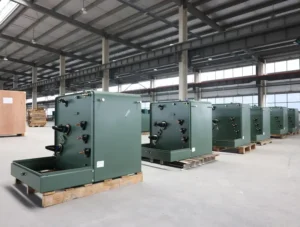What Does Transformer Impedance Mean?

Transformer impedance is a critical parameter representing the resistance and reactance within a transformer that impedes the flow of AC. This impedance is usually expressed as a percentage and is essential for determining how a transformer will respond under different electrical loads and fault conditions.
Small-substastion Transformer
Rated Capacity: Up to 20MVA;
Rated Voltage: Up to 44KV;
Single Phase Pole Mounted Transformer
Frequency: 50/60Hz;
Rated Power Rating: 5~333kva
Oil Immersed Power Transformer
Rated voltage:Up To 400 kV
Rated Power: 10MVA-300MVA
Table of Content
Components of Transformer Impedance
- Resistance (R): This is the opposition to current flow due to the conductors’ inherent properties, causing energy loss in the form of heat.
- Reactance (X): This is the opposition due to the inductance and capacitance within the transformer windings, which affects the phase angle between voltage and current.
Practical Implications of Transformer Impedance
- Voltage Regulation: Higher impedance results in better voltage regulation under varying loads. This means that the voltage drop across the transformer is minimized when the load changes, ensuring a stable output voltage.
- Fault Current Limitation: Impedance plays a crucial role in limiting the fault current. A transformer with higher impedance will have a lower fault current, which can protect downstream equipment from damage during short circuits.
- Transformer Design: Understanding impedance helps in the design and selection of transformers for specific applications. For example, single-phase transformers used in residential areas and three-phase transformers used in industrial settings have different impedance requirements.
Calculating Transformer Impedance
The impedance of a transformer is typically determined through short-circuit tests and is represented by the formula: Z=R2+X2Z = \sqrt{R^2 + X^2}Z=R2+X2
Where:
- ZZZ is the impedance.
- RRR is the resistance.
- XXX is the reactance.
Learn more: 5+FAQ About 15kV Transformer
Importance in Practical Applications
- System Protection: Properly matching the impedance of transformers with other system components ensures effective protection and coordination within the electrical network.
- Load Sharing: In parallel transformer operations, matching impedances is crucial for balanced load sharing.
- Efficiency: Optimizing impedance can enhance the overall efficiency of the power distribution system by reducing losses.
By understanding and applying the concept of transformer impedance, engineers can design more efficient and reliable electrical systems, ensuring stable and safe power distribution.
Get it now: Basic Guide To Oil Immersed Transformer
Download Resource
About Daelim
Recent Posts
About Bin Dong
Hello, I am Bin, General manager of Daelim which is a leading transformer manufacturer. If you have problems when you are looking for the equipment, what you need to do is tell us.
Tagged Transformer Impedance











